The Leonard Peltier Case And The Movement Behind It
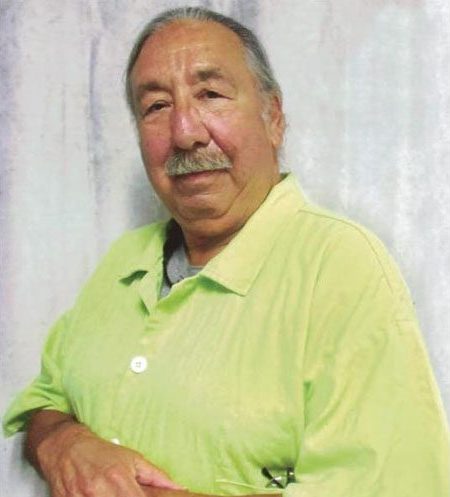
December 7, 2022
Every year for over four-and-a-half decades the innocence of one man has constantly been argued by native peoples and advocates for justice. Leonard Peltier is a man who was present during a shootout between tribes members and the FBI at the Pine Ridge Native reservation in South Dakota in 1975. Two FBI agents chased a red truck onto the reservation which they were prohibited from entering unless they had a warrant, when suddenly shots rang out. It’s not proven who shot first, but regardless, a gunfight ensued on the reservation, and the agents were killed. One tribal member, Joe Stuntz, was also killed, but no one has ever been held accountable for his death.
Leonard Peltier was one of many tribal members present on the reservation at the time of the shootout June 26, 1975, and like many there, upon hearing shots ring out, he took up arms to protect himself and his people. It was not proven that any bullets fired from his gun hit either of the agents. In fact, forensic evidence was withheld by prosecuting attorneys that would have exonerated him.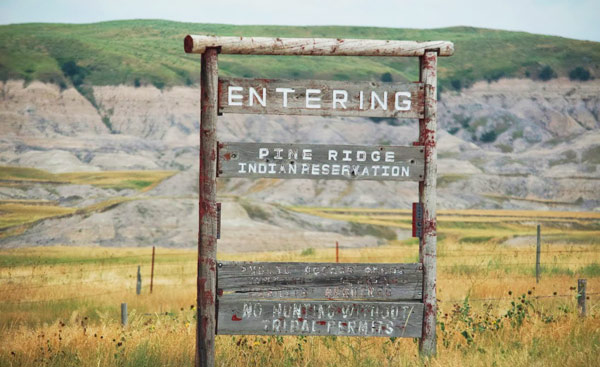
So who really killed the agents? The FBI believed someone must be held accountable, and any native American would do. To them that meant it had to be Peltier. The only thing true is he did have a weapon that was the same type of weapon that was fired at the agents, and he was on the reservation at the time of the shooting. Of course, this type of reasoning would never hold up in a court of law today. There may have been many strong arguments made on both sides back then, but there were admittedly racist jurists, and several witnesses who had been threatened into making false statements.
While I, as a writer, would like to stay neutral and bring unbiased news, there was clearly a lot of misuse and mishandling of evidence, as well as evidence withheld on the FBI’s part, all aimed at blaming Leonard Peltier for crimes he did not commit. In addition, there was a long history of racism and intimidation in which natives housed on the reservation were known to have been harassed, bullied, and targeted by government operatives. Personally, I believe that implies ulterior motives, but that’s just me.
There were ultimately three men arrested. Two of them were acquitted on self defense claims, but one, Leonard Peltier, was convicted. His charge? Aiding and abetting. But if the other two were acquitted, who was he aiding and abetting? The case is convoluted at best, and has been considered a serious breech of criminal justice ever since. Today, even the U.S. prosecutor who put him behind bars, James Reynolds, is marching with AIM (American Indian Movement) in solidarity with their demand for clemency for Leonard Peltier.
The bottom line is this. He has long served time in prison, nearly 50 years, for a crime that was not proven he committed, and he’s getting old. An international community of world leaders and growing local groups are demanding he be released. He is clearly no threat to our society. By contrast, he is a revered leader to his people and an international icon for social justice. I wholeheartedly believe that Leonard Peltier should be granted clemency and released. He should not longer be held behind bars for reasons our government knows are wrong, unjust, and inhumane.
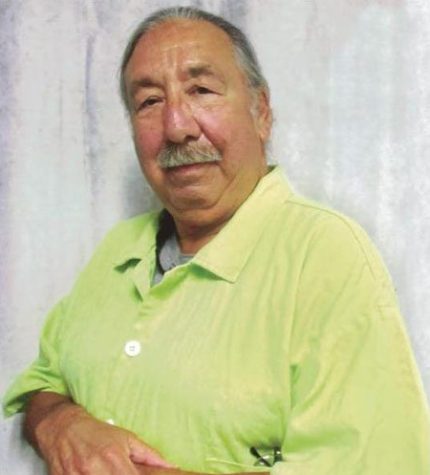
This semester, students in English III The Racial and Social Justice of Ethnic Studies, had the chance to investigate this historical case for themselves. They had weeks to research the history, discuss all the issues, and develop their own ideas. Their unanimous findings were in favor of clemency for Peltier. They participated in a zoom call with an advocate for Peltier’s release at CityArts in New York, Tsipi Ben-Haim, and followed up with an organized letter-writing campaign and postcard/petition, and their teacher, Ms. Frese, mailed their communications to the White House. As of this publication, Federal Judge Kevin Sharp, Leonard Peltier’s attorney, awaits a scheduled meeting with the President in which the demands for clemency will be decided.
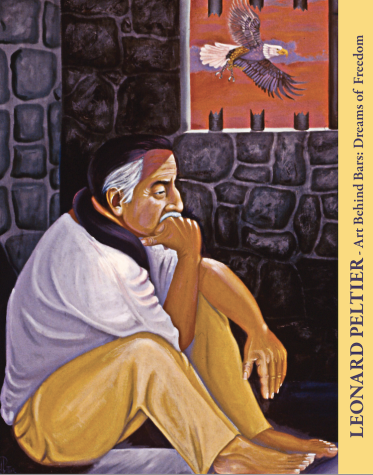 Meanwhile, Leonard Peltier dreams of freedom from behind bars and hopes to paint again while awaiting new word. Letters from his advocates, images of his many oil paintings, and a statement from Leonard himself, have been published in a book that can be purchased here: https://www.cityarts.org/cityarts-products/leonard-peltier-art-behind-bars-dreams-of-freedom Proceeds from the sale of this book all go to support Leonard Pelter’s needs.
Meanwhile, Leonard Peltier dreams of freedom from behind bars and hopes to paint again while awaiting new word. Letters from his advocates, images of his many oil paintings, and a statement from Leonard himself, have been published in a book that can be purchased here: https://www.cityarts.org/cityarts-products/leonard-peltier-art-behind-bars-dreams-of-freedom Proceeds from the sale of this book all go to support Leonard Pelter’s needs.
Gilbert High School’s civic engagement classes will also be making this story part of the upcoming Serve-a-thon project planned in early January. For now, students are sharing this story with their friends and families, and keeping a close eye on any new news.
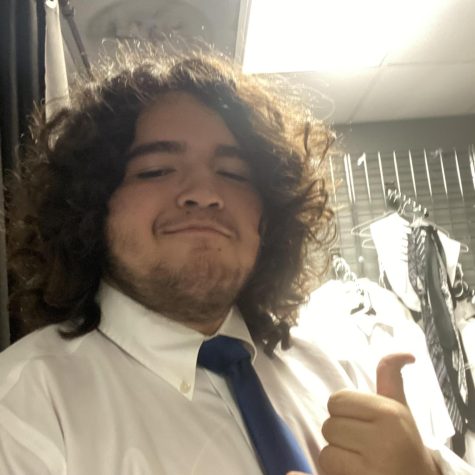
Julia • Jan 17, 2023 at 1:48 pm
I think that they should free him because he they don’t really have evidence of if he did it or not.
Randy V • Jan 17, 2023 at 1:44 pm
Free my guy
Janet Luna • Jan 17, 2023 at 10:57 am
This story has lots of information.. great story!
Nathan vasquez • Jan 17, 2023 at 10:24 am
This story is very interesting
T.k • Jan 17, 2023 at 10:18 am
This article is very well written and unbiased you’ve compiled a lot of the injustice that happened to Leonard Peltier into this article which is amazing keep up the amazing journalism
C.S. • Jan 17, 2023 at 10:17 am
I completely agree with the statement that Peltier’s demand for clemency should be served.
Isabel Aller • Jan 17, 2023 at 10:15 am
I’m glad to hear there are people trying to make a difference for injustice’s like this.
Angel Hernandez • Jan 17, 2023 at 10:15 am
Great story , still deciding which side I’m on
Moises • Jan 17, 2023 at 10:14 am
The facts are straight and it is told really good and it’s a great story and has a lot of good information I love the message it sends
Rosa Morales • Jan 13, 2023 at 10:54 am
It has a lot of amazing and interesting information about his story.
Joshua Perea-Diaz • Jan 13, 2023 at 10:53 am
Perfect maintenance, of journalistic neutrality, which in of itself is incredible. Giving the circumstances and corruption within the ranks of the Federal Bureau of Investigation. This information is vital as false conviction of our marginalized is still commonplace.
Alexis Cazares • Jan 13, 2023 at 10:50 am
Great Story Has a Lot of Information I Didn’t even know who Leonard Peltier was until now.
Jose Munoz • Jan 13, 2023 at 10:46 am
good story 🙂
W facts
Destiny Ayala • Jan 13, 2023 at 10:44 am
I admire your interest in staying neutral and providing your readers with unbiased news, I completely agree with your statement of Leonard Peltiers case not having been taken proper care of. Evidence was mishandled, some did not provide validation to the allegations and was affected by blatant racism. Youve had a great part in the support of this case I admire your involvement! :3
Sariah • Jan 13, 2023 at 10:44 am
I believe this story is well executed and I love the message and information it shows. I believe Leonard deserves justice and compensation.
Jason Healy • Jan 13, 2023 at 10:43 am
I am truly impressed, you were able to write an amazing piece I’m sure as Tsipi Ben-Haim said Leonard would be very impressed and thankful, Keep up the amazing work!
Trinity Edwards • Jan 13, 2023 at 10:40 am
This was an amazing article, it has a lot of information for the people who have never heard of Leonard Peltier!
April Matamoros • Jan 13, 2023 at 10:37 am
I love how imformative your story is! Poor Leonard, he needs his justice ASAP…
Tsipi Ben-Haim • Dec 17, 2022 at 6:16 pm
Thank you for your support and standing up for Leonard. He’ll be touched, encouraged and happy to see that High school students like you take the time to research and come up with their own findings that demand his clemency.
CITYarts are humbled & proud to represent Leonard’s art. He’s a very good artist with an honest deep dedication to his people and humanity. CITYarts produced this book, that Leonard wanted for 20 years. We hope one day we’ll invite you to celebrate his art with him in person at an exhibition in NYC !